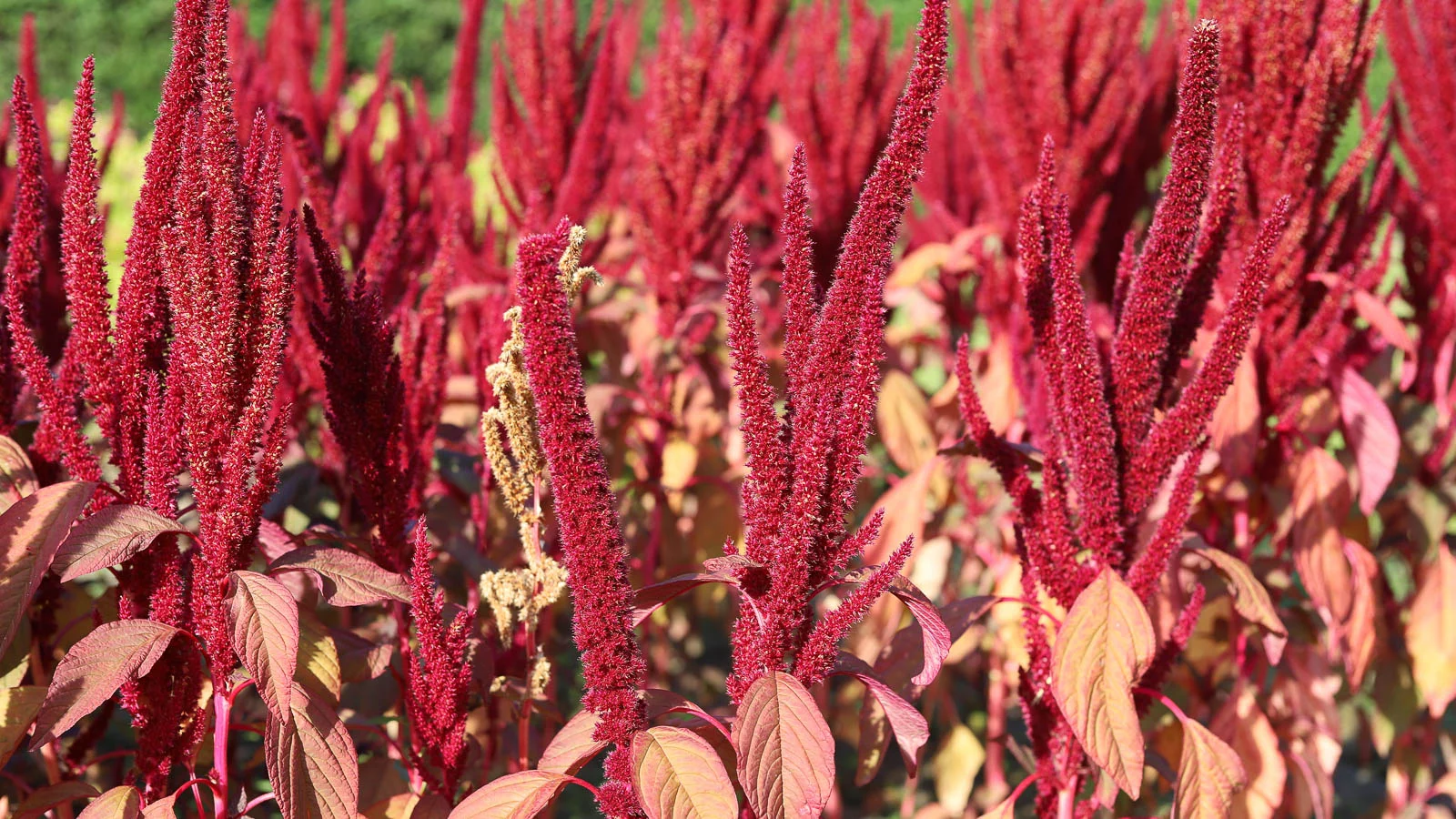Ancient grains are becoming popular again, and by growing amaranth you’re able to supply your own. Find out how in this complete guide.
You may have heard of amaranth, an ancient grain similar to quinoa and packed with protein. This incredible crop has been cultivated for thousands of years in the Americas and is prized worldwide as a superfood. Plus, it’s surprisingly easy to grow in your own garden.
Many amaranth varieties grow impressively tall, reaching up to 10 feet. Their sturdy stalks make excellent trellises for climbing plants like beans and peas. Birds feast on the seeds, while bees adore the flowers.
If you’d like to grow this low-maintenance crop yourself, follow this guide.
Overview
- Plant Type: Annual
- Family: Amaranthaceae
- Genus: Amaranthus
- Species: Amaranthus hypochondriacus, Amaranthus cruentus
- Native Area: Central and North America
- Exposure: Full sun
- Height: 2–8 feet
- Watering Requirements: Moderate
- Pests & Diseases: Weevils, tarnished plant bugs, flea beetles, root rot
- Maintenance: Moderate
- Soil Type: Rich, well-draining
- Soil pH: 6.0–7.5
What is Amaranth?

Amaranth flowers attract birds and pollinators to gardens. The most common grain varieties are prince’s feather (Amaranthus hypochondriacus) and red amaranth (Amaranthus cruentus). Other names include red-rooted pigweed, purple amaranth, and velvet flower.
Native to Central and North America, amaranth species vary in height, typically growing 2–8 feet or taller. The plants have strong taproots, broad leaves, and long, bushy flower clusters in shades of burgundy, gold, or green. Tiny seeds form on flower heads that range from 4–12 inches long.
Seeds germinate in under two weeks. Growth starts slow, but once seedlings reach a foot tall, they shoot up rapidly, producing vibrant flowers. Harvest grains in fall when flowers turn brown and dry.
Uses

The flowers of amaranth can be used to make colorful dyes.
Amaranth is a nutritious, gluten-free grain rich in protein. Seeds can be ground into flour, popped like popcorn, pressed for oil, or cooked like rice. Young leaves of Amaranthus cruentus are edible, serving as a leafy green substitute, while mature leaves can be sautéed. However, avoid leaves from plants grown with synthetic fertilizers, as they may contain excessive nitrogen.
The seeds also sprout into microgreens. Beyond food, amaranth has been used for dye, herbal shampoo, and livestock feed.
Varieties

For a pop of color in the garden, try Amaranthus tricolor.
Beyond grain types, ornamental varieties like coral fountain (Amaranthus caudatus) and Joseph’s coat (Amaranthus tricolor) add striking color to gardens.
Planting
Plant in mid-spring outdoors or start seeds early indoors.
The best time to plant amaranth outdoors is mid-spring to early summer. For an early start, sow seeds indoors 4–6 weeks before the last frost, though direct sowing yields healthier plants.
Amaranth thrives in well-drained, fertile, loamy soil. Plant in rows, raised beds, or large containers (10–18 inches wide) with full sun. Transplant indoor seedlings carefully after the last frost, keeping roots intact.
For garden design, place amaranth near borders or as a companion in the “three sisters” guild (replacing corn with amaranth for beans to climb).

How to Grow
Amaranth requires minimal care and resists most pests and diseases. More space and airflow encourage larger plants.
Light
Full sun (6–8 hours daily) is essential. Weak stalks and poor flowering result from insufficient light.
Water
Drought-tolerant once established. Keep soil lightly moist early on, then water 1–2 times weekly. Avoid wetting flowers.
Soil
Prefers rich, well-draining soil but tolerates poor conditions. Amend with compost or peat moss for better moisture retention. Ideal pH: 6.0–7.5.
Temperature & Humidity
Grows best in warm climates (USDA Zones 3–11). Germination temps: 65–85°F (18–29°C). Mature plants withstand light frosts but dislike cold early on.
Fertilizing
Low-need; use fish emulsion, worm castings, or composted manure at planting. Avoid high-nitrogen fertilizers.
Maintenance
Pruning isn’t necessary, but trimming young plants encourages bushier growth. Stake tall varieties in windy areas.
Propagation
Grows easily from seed. Sow shallowly, thin seedlings to 18 inches apart, and expect self-seeding.
Harvesting
- Leaves: Pick young leaves (25–40 days after planting). Harvesting the top half prompts regrowth.
- Seeds: Wait until flowers dry in fall (or after first frost). Cut stalks and dry further before threshing.
Storing
- Leaves: Refrigerate wrapped in damp paper towels for a few days, or freeze after parboiling.
- Seeds: Store in an airtight container in the fridge for 6–8 months.
Common Problems
Incorrect temperature can cause growth problems.
Caused by shade, overcrowding, or cool temps. Ensure full sun, proper spacing, and warm conditions.
Pests
Keep an eye out for signs of pests to remove them as soon as possible.
- Stem weevils: Larvae damage roots; remove affected parts or use neem oil.
- Tarnished plant bugs: Suck sap from seeds; treat with pyrethrin.
- Flea beetles: Target seedlings; use row covers or diatomaceous earth.
Diseases
There aren’t many diseases threatening the resilient amaranth. The main concern is damping off which can occur during the early stages of growth.
Plants may die off suddenly from too much nitrogen or overwatering. To prevent this, limit the use of fertilizer and allow the soil to dry between waterings. You can also thin out the seedlings to encourage more airflow.
Root rot can also impact the growth of your amaranth. This is typically caused by overly wet conditions, prevented by ensuring your soil is well-draining. Plants currently suffering from severe root rot likely won’t recover. If the plant dies, remove it and do not compost the roots to avoid spreading fungal pathogens.

